Rothera’s test by Nitroprusside reaction:
Rothera’s test by Nitroprusside reaction is a specific test used for the determination of ketone bodies. The following ketones bodies or acetone bodies are found in the urine during a condition called “ketosis.”
- Acetone.
- Acetoacetic acid.
- β- Hydroxybutyric acid.
Ketosis may be associated with diabetes mellitus called Diabetic ketoacidosis, or it may be due to starvation, persistent vomiting and high fat and low carbohydrate diet.
Rothera’s test chemicals required:
- Powered ammonium sulphate.
- 5% sodium nitroprusside.
- Concentrated aqueous ammonia.
Rothera’s test procedure:
- Take 5 ml of urine in a test tube.
- Saturate it with powdered ammonium sulphate.
- Add 1 ml of 5% sodium nitroprusside.
- Mix thoroughly.
- Now add 1 ml concentrated aqueous ammonia carefully along the side of the test tube without shaking.
Also check: Hay’s test for bile salts – Its principle, reagent and procedure
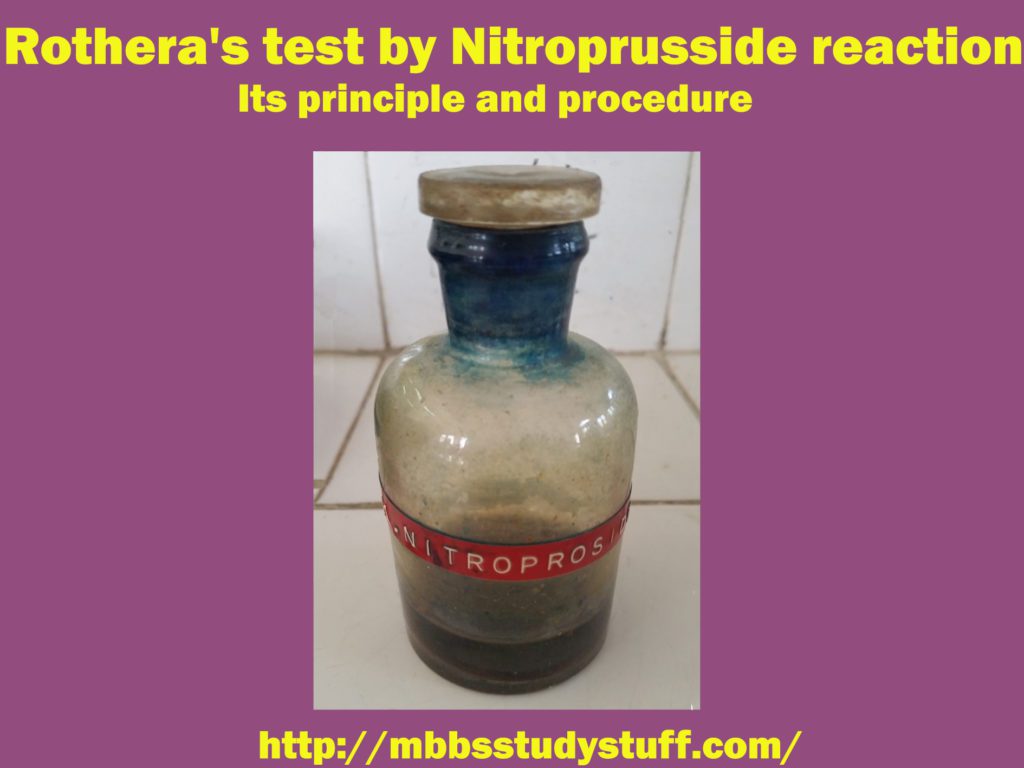
Rothera’s test Observations:
- A reddish-brown ring develops at the interface of the two liquids indicating the presence of ketone bodies in the test urine.
Rothera’s test Precautions:
To obtain a better result, follow the below steps.
- Before starting the procedure, wash the apparatus before and after the experiment.
- As usual, carefully handle all the chemicals in the laboratory.
- Avoid urine touching with hands while doing the experiment.
- Use test tube holder for holding test tube.
- The test tube used should be clean neatly and free of any dirt and chemicals because we will not get the proper result then, so try to use a clean and clear test tube for a correct result.
Also check: Indican test in urine
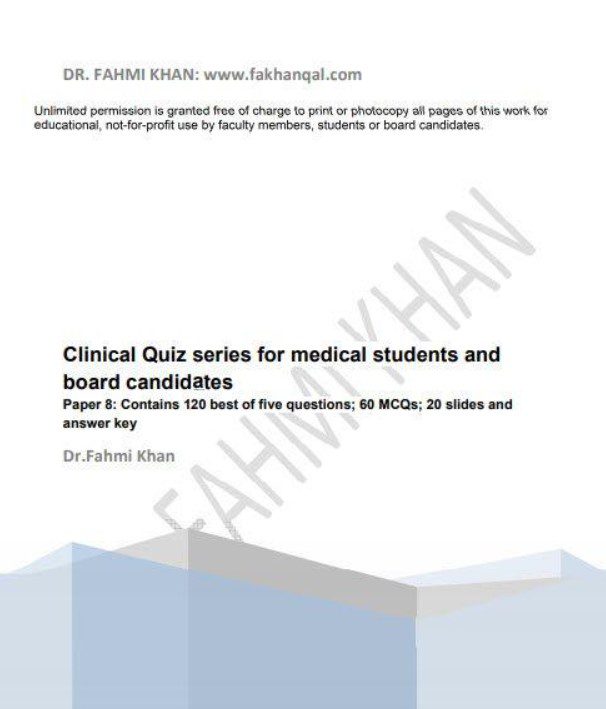
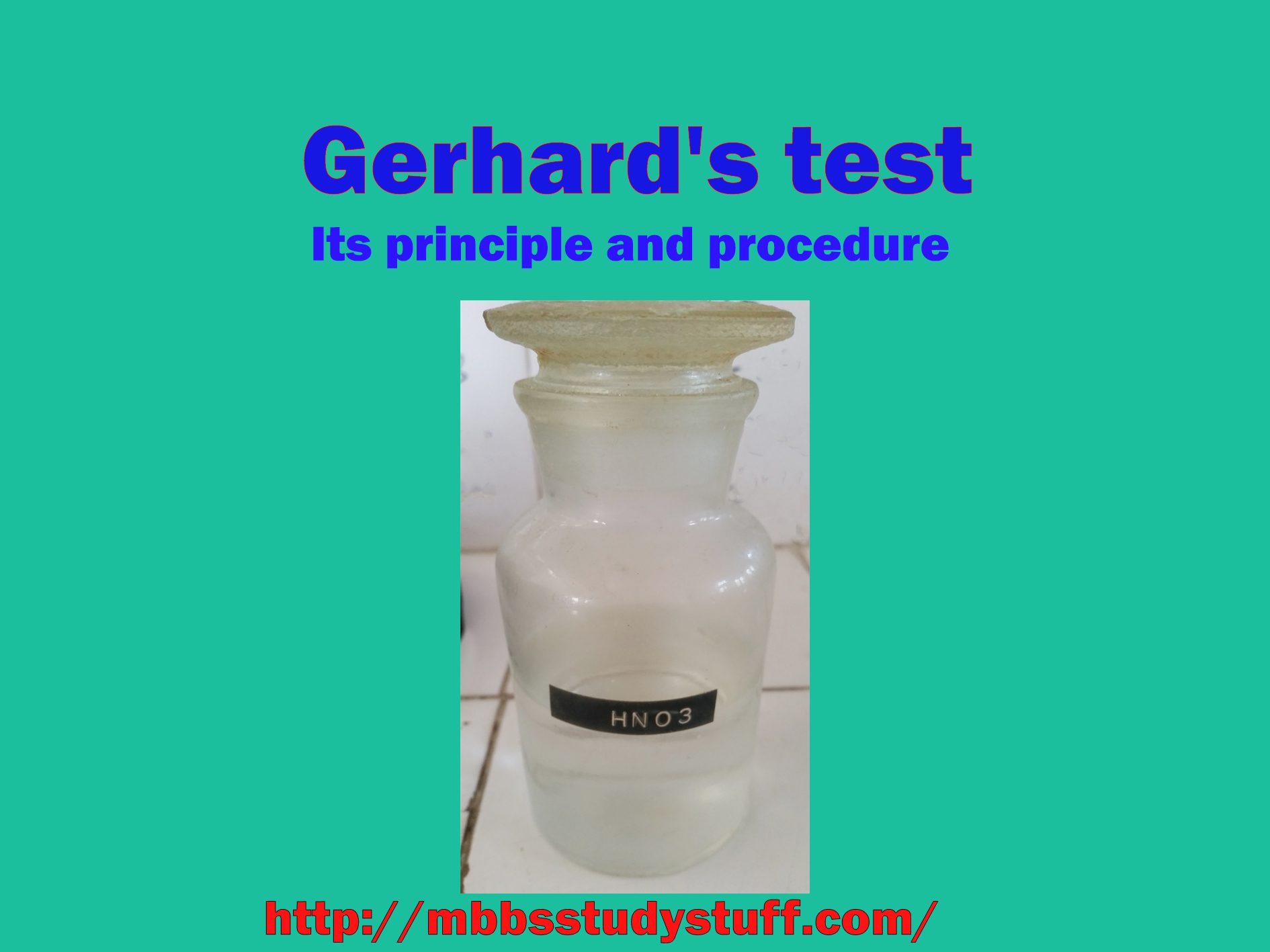


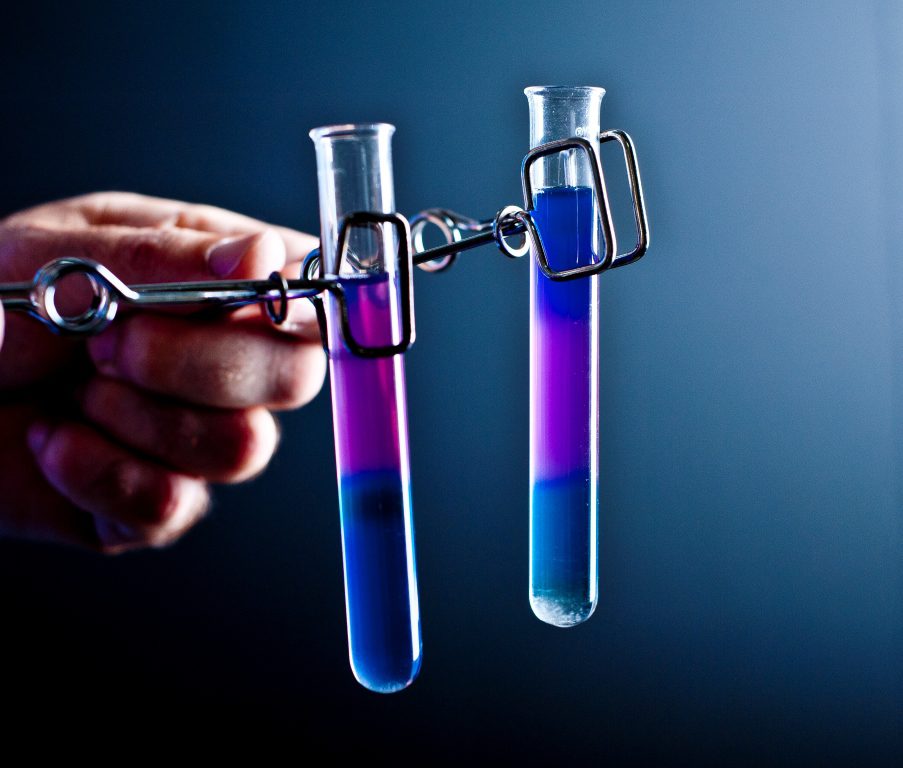
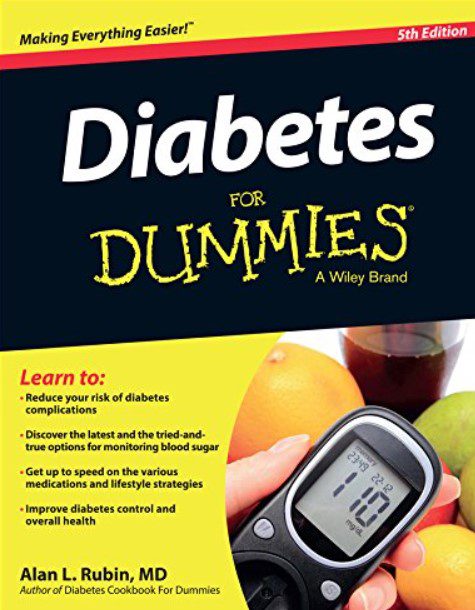


Why ammonium sulphates is used?